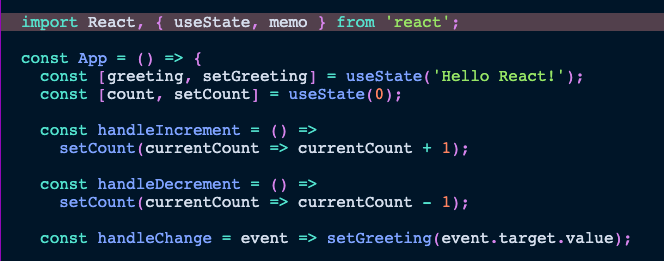
If one of the parameters change when you try to access the value, the value of course will be calculated without memoization. In the above code we have created a ChildComponent and cached it using mo. If you need to pass arguments, you also need to pass them in the array: const memoizedValue = useMemo (() => expensiveOperation (param1, param2), ) Make sure you add that empty array as a second parameter to useMemo(), otherwise no memoization will happen at all.
REACT USE MEMO HOW TO
Here’s how to use it: const memoizedValue = useMemo (() => expensiveOperation ()) Using this hook, this operation is done only once, then the value will be stored in the memoized value and the next time you want to reference it, you’ll get it much faster. Sometimes you have to compute a value, either through a complex calculation or by reaching to the database to make a costly query or to the network. useCallback is used for callbacks passed to child components. This hook is very similar to useCallback, the difference is that useCallback returns a memoized callback and useMemo returns a memoized value, the result of that function call. They both take in a function and an array of dependencies. This includes the component where the state or prop is defined, as well as any.

This means that React will re-run the entire body of these components everytime it re-renders.


This hook is used to create a memoized value. You can also see that the signature of useMemo and useCallback is very similar, and that they can convert to each other. When to Use the React useMemo () Hook When a reactive value changes in React, it triggers a re-render of all components in the React data flow that depend on that value. One React hook I sometimes use is useMemo. Find out what the useMemo React hook is useful for, and how to work with it!Ĭheck out my React hooks introduction first, if you’re new to them.


 0 kommentar(er)
0 kommentar(er)
